You are reading the older HTML site
Positive Feedback ISSUE
september/october 2008
Power Launch: the PS Audio Power Plant Premier, the Oyaide R-1 AC
Outlet, and the Tel Wire Power Cord
by
Bruce Kinch
My Dad always despaired of my tendency to do things bass-ackwards. I suspect he would have had a good chuckle over the learning process I've endured in re-configuring my system. All that worked so well in an ideally proportioned room in Boston flat-out sucked in a square room in our adobe home in New Mexico. I started scratching my head and changing things six months after arrival.
Wide dispersion full-range speakers were the first to go, replaced with controlled dispersion, variable-bass output Amphion Xenons; my ancient Rat-Shack SPL meter supplanted by the PC-based ATB analyzer so I could position the speakers to best deal with the hideous room modes—there is zero bass leakage from an adobe room. I added the Aqvox solid-state phono stage, Bent Audio passive preamp, and cool-running e.One M300 Class D monoblocks from Bel Canto, because the air conditioning system was so noisy I had to shut it off for any serious listening (just the 12AX7/6922s in my Herron electronics and the Michael Yee solid state amp noticeably warmed up the room). No studs in the mud to wall-mount the turntable shelf, so a heavier equipment rack supports the record player.
So, I'm now cool, balanced, green, and shiny new—what's not to like? Well, even with the individually new and most excellent componentry, sometimes the music just wouldn't all come together right. Especially when things got loud and complex, there was a sense of congestion and strain. Nothing to do I thought but switch out each component and cable, methodically, one at a time, listen and replace.
It was only after eliminating everything else I could think of that I finally ended up doing what I probably should have done first: deal with the power.
Part I: The PS Audio Power Plant Premier
Sure, I've had some form of power treatment for decades—first an industrial isolation transformer and glorified power strips, later effective AC noise filters from Chang and AudioPrism. My listening room has its own circuit, but there are lots of CFL bulbs, a few dimmers, computers and flat screen TVs in the house. The cute little PS Audio Noise Harvester I've used to monitor grunge on the line sometimes flickers, sometimes glows like an evil-demon nightlight, so I knew there were issues. The power grid in semi-rural New Mexico is such that the lights can flicker when there are thunderstorms in Colorado. And we get some dandies of our own here in the high desert.
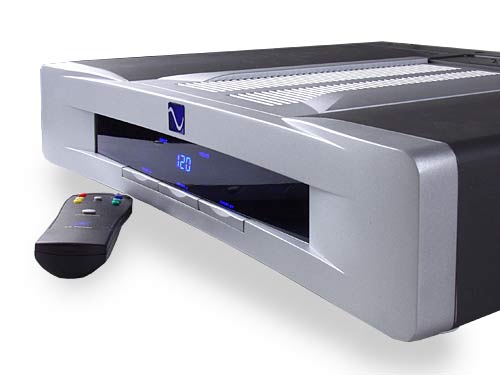
Regular PFO readers will recall Mike Wechsburg's informative review of the PS Audio Power Plant Premier (PPP for short) in Issue 34 (link), and of course the thing has also won raves from other audio mags and sites. Really, having read them all, I just up and sprung for one, without any intention of ever writing a review, so I will just add a few observations of my own here. I had followed the evolution of the PS Audio concept through the previous versions. A "Power Plant" differs from most power "conditioners" in that it is an AC regenerator, not just a filter/surge protector/isolator. In essence, it a purpose-built heavy-duty power amplifier, converting "normal" AC to DC and then generating up to 1500 watts of clean power at 60Hz (or 50Hz where that is the local standard) which then powers other equipment. Two things about the new model tilted the balance towards purchase. First, the Premier is significantly more efficient than the previous designs (thus generating much less heat in use), and second, there's the special buttons on the remote.
Yes, what the world didn't know it needed was a power conditioner with a remote control. Mostly, the remote just replicates the front panel controls, toggling between real time input/output voltage and THD, display bright/dim/off, and system power (the unit can sequence the powering up/down of connected components). But then PS Audio gets in a real philosophical bind, as we shall see. Basically, they sell most of these units on the promise of a perfect 60Hz sine wave, the Platonic form of what is supposed to come out of the wall socket. Which it happily provides, and one easily hears the improvement pristine power provides. But what if there was something better than perfect?
After all, audio equipment generally does not "use" the full 60Hz AC sinewave the way a resistive application like an incandescent light bulb does. A typical power supply converts (rectifies) the AC from the wall socket to DC and stores it as a theoretically stable reserve. The signal circuitry essentially modulates that reserve as it is released. One doesn't have to be a Naim-brain to appreciate that a component's power supply design is often more significant in achieving ultimate performance than the signal path itself. Admit it, we've all been tempted by the ads and reviews touting huge toroidal transformers and megacaps—the kind of massive and "stiff" power supplies that engender outright audiophile lust.
However, as the signal circuitry sucks its juice from power supply, the power supply reservoir itself must be immediately replenished from the AC line. Mike W noted that there is an option with the PPP which "reduces power supply ripple", i.e., minimizes the effect of the 60 Hz AC on the stability of the DC supply. PS Audio calls this "Multiwave", and as the name suggests, it adds a secondary signal to the pure 60Hz sinewave, intentionally distorting it in a controlled fashion. Previous versions of the Power Plant have allowed user-adjustable frequency, voltage, and several "Multiwave" options. While that was great for the geek in us all, we will just note (as presumably PS Audio's lawyers did) that not all combinations worked felicitously with all equipment. The Premier offers but a single Multiwave setting (I believe it overlays a low level 180Hz sinewave), activated only by a small button discreetly labeled "MW" on the remote. The idea is that the peak of the 60Hz sinewave is thus somewhat flattened, allowing the connected equipment to draw current a bit longer during each charging cycle. PS Audio describes the effect as sounding like the equipment's power supply is larger. In my system, the entire presentation is more dynamic, wider, deeper, and wetter—Multiwave is like Viagra for electronics, and so seductive it is plenty reason alone to audition a PPP against any conventional power conditioner.
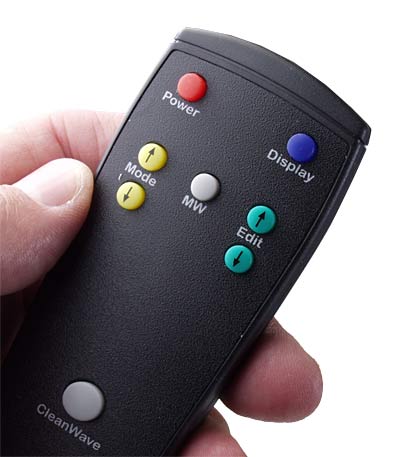
The earlier Power Plants were a mixed bag when used with turntables—changing frequency changed speed (PS Audio actually included an 81Hz option to spin LPs at 45 rpm), and the Multiwave settings that added square waves were bad for anything with a motor. I took note of Mike W's endorsement of the PPP with his turntable, and I do concur. With the Multiwave feature enabled, my Nottingham Analogue Spacedeck was rock solid and speed-stable. With more complex turntable power supplies and speed controls, I can't say. The second oddball button activates the "Cleanwave" function. Used when not playing music, it is intended to "de-gauss" power supply circuitry by varying the frequency and amplitude of the sine wave in small bubble-like responses. I use it prophylactically, but don't really hear much as a result. The earlier Power plants were also rather limited in output, and used mostly for source components. The PPP had no problem driving my 100wpc Michael Yee amp or the 150wpc Bel Canto Class D monoblocks, and ran cool enough that the fan was rarely if ever activated. It is always interesting to watch a technology develop, and with the Premier, PS Audio has taken a tweak product and improved it to the point where it should be heard in any hi-resolution system.
Part II: Oy, Oy, Oyaide
About the same time, I decided to replace the wall socket. I had originally considered PS Audio's Soloist ($199), which combines 1st stage noise filtration and a duplex outlet to feed my Audioprism power conditioner (which provides filtering but not spike protection). Unfortunately, that particular unit requires a two-gang box, and our single-gang box is embedded in a foot of dried dirt and straw. There are a number of audiophile-grade AC receptacles now on the market, but once I realized I was about to replace a Home Depot item with a functional equivalent at 100+ times the price, I decided to do some Googling. One that seemed to have a nice buzz going was the Oyaide R-1, their top-of-the-line unit featuring Platinum/Palladium plated, polished Beryllium-Copper contacts. I ordered one online, and straight from the box one realizes it is a substantial piece, and obviously made to a much higher standard than the generic Leviton. The body is fiberglass-filled nylon, and the mounting bracket is gold-plated brass and sturdy enough to hang the heaviest of after market cords. It is 20A rated, but obviously one doesn't use a 20A plug/application on a conventional 15A household line. But if you do have a 20A circuit, go ahead and bi-amp with Krells. I have two outlets (on the same 15A circuit) close to the equipment rack, so it was easy to install the Oyaide in one, and swap the source and amp power cords back and forth (no power conditioner used to eliminate that variable).
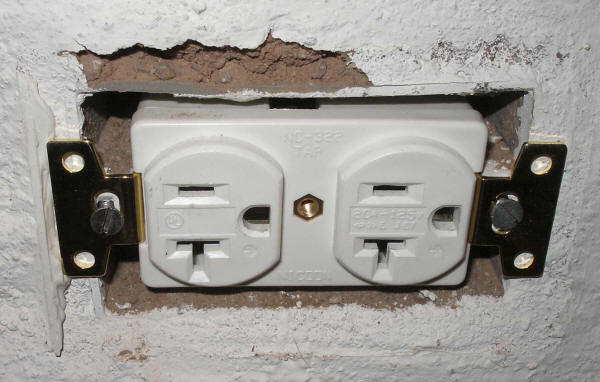
Despite my considerable and long-held skepticism of conspicuous audiophile bling, my jaw dropped at the improvement the Oyaide made. The entire character of the music changed—tonality became richer and better balanced, there was more air and ambience, the soundstage deepened, and most of the upper mid-range/treble congestion that had been so frustrating simply evaporated. I can't tell you the hours I had spent swapping components and cables, moving acoustic panels, and changing the speaker/chair triangle in efforts to deal with it. And it was the stupid AC outlet! Yes, a $130 AC receptacle is ridiculous—if you only plugged the vacuum cleaner and a reading light into it, it would be a waste of money. But electronics are a much more sensitive and dynamic load than bulbs and motors, and because the entire system is tied to this single source, a quality outlet like the Oyaide R-1 might well be the most cost-effective tweak out there. But it's still going to be hard to explain this one to the missus at the end of the month.
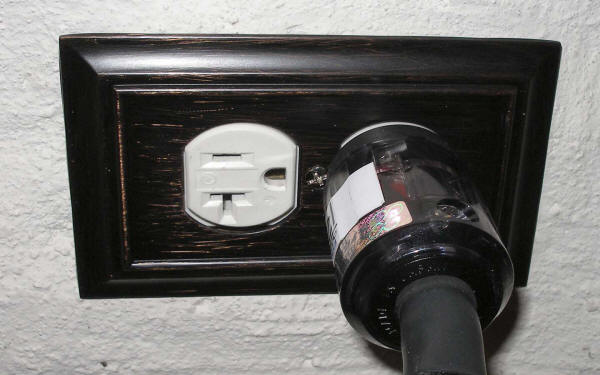
I did take a pass on the Oyaide $210 Aluminum and Carbon-fiber outlet cover, though. I've been using a cast zinc wall plate from Lowes. It doesn't flex and is non-magnetic. Cash outlay, $5. I should note that the center machine screw thread that fixes the cover plate to the outlet is incompatible with the standard 8-32 and all the Metric sizes at the hardware store, so don't lose it. Because the adobe wall is quite uneven, I added some Mortite caulk to dampen any resonances.
Part III Tel Wire
It was the obvious improvements of the Oyaide receptacle and the PPP's Multiwave mode that started me thinking about the entire path from the wall to the power supply. In college I switched my major from physics to perceptual psychology, so I am as qualified as anyone to misunderstand why things like interconnects, speaker cables, and power cords can sound different—but bear with me. Music is represented electrically (in the analog domain) in terms of frequency, amplitude, and time (aka phase). Ever since the first Monster Cables strode the Earth, audiophiles have come to recognize that a cable's metallurgy, geometry, dimensions (not just length), dielectric, shielding, and connectors can change the sound because they affect the propagation or integrity of those signal characteristics in various ways.
The situation with power cords is still somewhat controversial. The skeptics point to the miles of cable from the substation, and the hundreds of feet of Romex in the house, and ask how the last five feet could make a difference. The retort that the power cord is the FIRST five feet towards the AC source seems to me to miss the point. Years ago, a friend (and MIT EE grad) in Boston had re-wired his basement listening room and ran the Romex out of a hole in the wall and soldered it directly to his Marantz amp. That was some of the best sound I've ever heard, but any electrician who did that could lose his license. Still, my recollection suggests that the differences heard from power cords are subtractive effects—the best power cord is no power cord. Bandwidth is probably not an issue with 60Hz power cords, but power handling likely is. Shielding might be (all wires are antennas), and connections probably are. Something happens when the electrons wind their way across a series of materials and interfaces from Romex to outlet, socket to plug, across the cable to another plug, socket, and interior wiring to the power supply. The domestic AC system is designed for the steady current draw of appliances and lighting—we've all seen the lights dim when an air conditioner kicks in. The current demands of most audio electronics may be lower, but they are constantly changing as the power supplies demand their juice. I suspect at some point, people (probably Nordost) will start talking about how "fast and transparent" their power cords are, much as better subwoofers seem subjectively "fast" even at 20Hz. My surmise is that a good power cord should be as short electrically as possible, using consistent conductor materials and maximized contact interfaces. And it should avoid geometric, dielectric, and shielding factors that might constrain the current demands (much as they can with interconnects, for example).
It was Googling Oyaide that led me to Tel Wire and Chris Kline—a link indicated his Tel Wire Cord utilizes Oyaide connectors. At that point, I was just looking for a cord for the PS Audio PPP (my previous power conditioner cord had a 20A plug, and was thus incompatible). I figured an Oyaide plug would have an optimum interface with the R-1 socket—Platinum/Palladium coated Beryllium-Copper contacts in both. But there were other aspects of his design that piqued my interest. The conductor he chose is Ohno Continuous Cast single-crystal copper, which addresses the "shortest, simplest path" concept by minimizing crystal boundaries. But in an audio culture that has proffered ever fatter and heavier designs as inherently better, the Tel Wire is remarkably light and flexible. My previous power conditioners were designed to be used plugs up, and fitted neatly in the few inches of floor behind my equipment rack. The PS Audio Premier, on the other hand, is larger than many amplifiers at 17 x 17 x 4 (and 35lbs), and has its outlets on the rear panel—where one can't see them. The PPP sits on the bottom shelf of the rack, and wrestling stiff, bulky power cords into place (including PS Audio's) is a real chore. There is no standard for the IEC socket orientation (vertical, horizontal, ground pin up or down), so stiff cables end up making sharper 90 degree twists and turns than they like, and obviously stress the connection. By contrast, the Tel Wire eschews a shield layer and heavy sleeve in favor of a loose semi-braid which in itself provides significant rejection of RF/EMI (cf. Kimber Kable designs) and "lossy" damping of mechanical vibrations. The flexibility also allows the power cord to be bought horizontally to the outer frame of the rack, secured with Velcro ties, and then brought down to the PPP, thus crossing the interconnects at 90 degrees rather than vertically paralleling them at the back of the rack, and minimizing any possible interaction. This has never been possible with any of my other after market power cords.
Chris Kline has an interesting background—he studied music (at Berklee, one of my favorite. haunts in Boston) as well as science, and had worked for both a large speaker company and another cable outfit before starting out on his own. So his criteria are musical as well as technical, and he knows good sound from snake oil. He emailed me that as part of the R&D process he needed to establish a "known constant" because all pieces of gear offset each other to some extent. Really, this cord was born out of the need for that known constant, I really needed something as neutral as possible so that I could successfully/competently design Tel's speaker cable and interconnects. A little sweat and a lot of hair pulling."
My Dad was no Einstein, but he'd have agreed with that notion. As suggested above, though, I tend to spend a lot of time (also sweat and hair, not to mention cash) chasing moving targets. I had a number of after-market power cords on hand, from both well-known cable companies and a couple of Internet entrepreneurs. They were more or less dedicated to source components (analog and digital), the power amps, and the power conditioner. Over time, I had sorted them into positions where each one did the task assigned it pretty well, but things got iffy if the cords were swapped. To be precise, I had no "known reference".
I had what is called a kludge.
When Kline agreed to send me a sample cable, he suggested that although many users had found it particularly effective on disc players, I should try it wherever I liked. As it happened, I had just borrowed a well-regarded SACD/CD player from a local dealer, curious if it would be an improvement over my Underwood-modified Denon 2910. Using my usual digital source cable, there was very little difference apparent: the Denon sounded perhaps a bit coarse, the dealer demo a bit smoother. Switching to the Tel Wire was literally revelatory. The Denon suddenly came alive, CD replay becoming much more dynamic and 3-dimensional, with more richly textured instrumental and vocal tonalities and perceived detail. The demo unit's smoothness remained, but CDs now sounded flat and colorless in comparison to the Denon. On the other hand, it did out-point the Denon on SACD in terms of high frequency detail and sweetness, but the Denon still had more musical vitality. To my chagrin, I realized I was probably hearing the real benefits of the 3-year old Underwood Level 2 mod for the first time. And while I love SACD, most of my digital listening is CD based. So the demo went back to the dealer and my wallet stayed in my pocket.
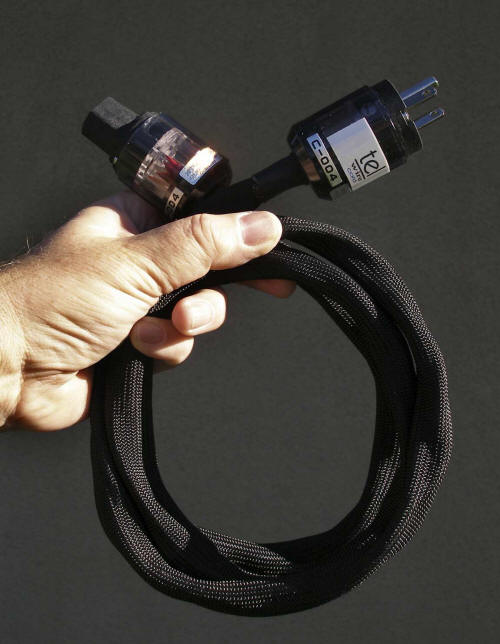
I also think the experience illuminated my concept of a neutral improvement: the Tel Wire had improved the performance of both players, but in different ways, and highlighted the differences between them. I began trying the Tel Wire with other components. The Aqvox phono stage draws very little current, but the Tel Wire immediately enhanced its considerable transparency and dynamics, prompting me to re-set my baseline VTA and switch interconnects to take advantage of the change. Although it was still Summer here, I briefly tried the power cord with the tubed Herron preamp and phono stage. Both have sophisticated power supplies, and with the Tel Wire, even their legendary musicality kicked up a couple of notches, as though I had done a major tube-swap. The Michael Yee amp was better with the Tel Wire, and yes, so was the PS Audio Power Plant. At this point I emailed Kline and pleaded with him to send a second sample while we were on vacation. Upon our return, I was able to assess the two power cords on source and amp, on power conditioner and second component, and with the Bel Canto monoblocks.
The results were incontrovertible. Overall, the Tel Wire was superior to all my other power cords in every case—although in fairness, none were as expensive as the Tel Wire. And yes, the benefits of using the two cords were, no pun intended, synergistic. Generally, the improvements were in perceived clarity, tonal texture, increased air, dynamics, and stage depth. The results with source components were particularly striking. With the Bel Canto class D amps, my previous power cords provided a subjectively more weighty bass, but the Tel Wire bass was distinctly more agile and tuneful, and from the mid-range up it was absolutely no contest. There was no lack of power or extension (the Amphions are flat below 30Hz in the room, but I don't have a subwoofer to know what happens any lower), just a better integration of "quicker" bass with the rest of the spectrum. My Bent Audio TAP preamp runs off a wall-wart, but is essentially passive, and ungrounded. I have noticed in the past that the unconnected source RCAs do pick up some 60Hz hum, and this was perhaps a bit more evident with the unshielded Tel Wire. Cardas RCA caps (or shorted cheapo RCA plugs) eliminate the hum, but I basically ignore it. I heard virtually no noise through the connected inputs, but YMMV, and sensible cable positioning is suggested.
As implied by its physical flexibility, the Tel Wire is not a converted jumper cable. A 15A household circuit is normally wired with 14-gauge wire, and I do not know what if any gains would be had using a heavier conductor in a power cord. My system has been specifically configured for efficient, low current-draw electronics, so I cannot comment on how the Tel Wire would work with current-hungry Class A or large tube amps. Or for that matter, with a power conditioner that was heavily stressed. The Prius generation will clearly appreciate the finesse the Tel Wire brings to musical reproduction, but there are Hummer types out there who might pick one up and cast it aside with a snort of derision. Kline might consider tossing them a bone with a version that doubles the conductors, I suppose. Otherwise, most highly recommended.
Taken together, the Oyaide receptacle, the Tel Wire Cords, and the PS Audio Power Plant Premier have elevated the performance of my system far beyond what it was capable of before I finally got around to what should have been done first—dealing with the fundamental problem of properly delivering the AC power so everything else could work as the designers intended. There is likely nothing unique to the combination—there are quality alternatives to each product—but they do work very well together. My Dad, who always made me sit down and do my homework first, would be happy too.
PS Audio www.psaudio.com
The Lotus Group www.oyaide.com
Tel Wire www.telwire.net
